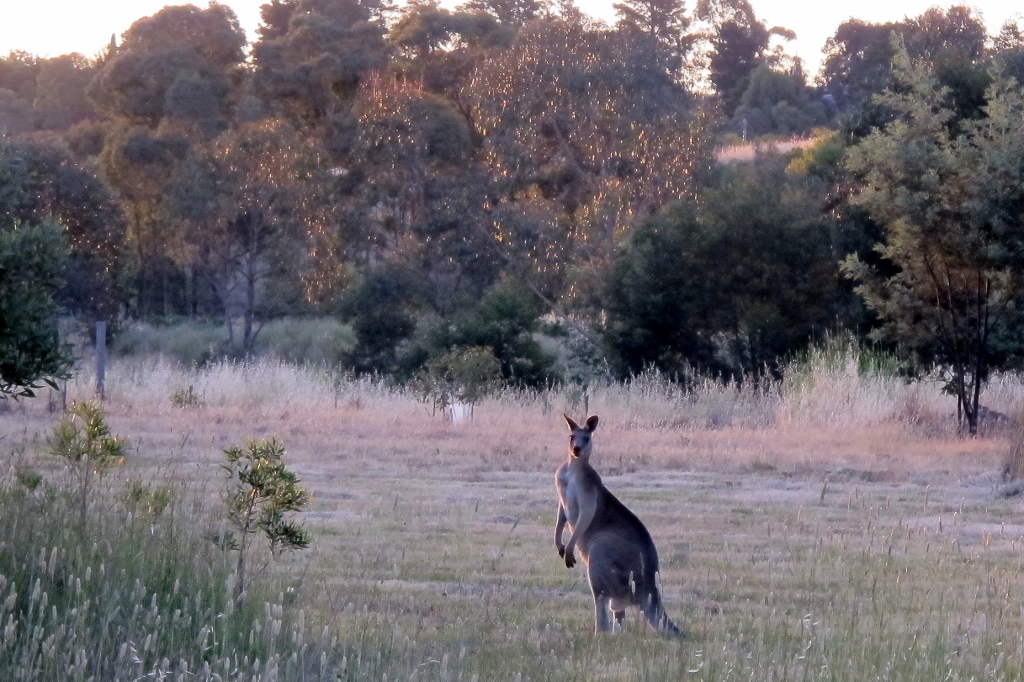FOBIF has made a brief submission to the Biodiversity discussion paper. The substance of the submission is set out at the end of this post.
The discussion paper is worth a look, tossing quite a few provocative ideas. Among them:
‘Tourism Victoria and public land managers such as DELWP, Parks Victoria and local councils will work in collaboration with the community to ensure that our iconic natural and built assets keep offering opportunities to connect with nature. Recent projects like the Grampians Peaks Trail, the Harcourt Mountain Bike Trail and the Shipwreck Coast Master Plan represent a concerted effort to strategically look at opportunities to maximise access to nature.’ page 39

In Happy Valley: are kangaroos like rabbits? Is mountain biking a connection to nature? Should reveg projects move away from ‘local provenance’ plants?
To help biodiversity adapt, the paper proposes to ‘Encourage gene mixing (where appropriate) to increase the genetic “fitness” of populations to adapt to a changing environment. This could lead to reduced emphasis on the use of “local provenance” material in revegetation projects or mean we are more likely to favour translocation of individuals between populations.’ page 50
‘Examples of native species that sometimes require management intervention to protect other biodiversity values include: Kangaroos, which in some rural areas have increased in numbers due to the increase in reliable water supplies (e.g. stock watering) and pasture for grazing. High numbers of kangaroos can exert high grazing pressure on native plants and wildflowers, a bit like rabbits, and can destroy habitat that ground-dwelling native animals may need to survive.’
Here’s the substance of FOBIF’s submission:
‘We support the directions this draft paper proposes. We are unable to respond to the questions proposed in the consultation paper, but wish to make the following general comments:
- In our view the fundamental problem in this matter is neatly summed up on page 13 of the Word version of the draft: ‘The immediate cost of avoiding harm to the natural environment is sometimes perceived to be too high.’ This may be a view held in the community, but responsibility for it rests squarely with successive governments, which have consistently underfunded public land management. Almost every worthy point in the draft document hinges on proper resourcing of the relevant responsible authority: without such resourcing the draft is just a gesture.
- Though it is not clear to us what is meant by ‘integration of Environmental-Economic Accounting’, we support any system which will make clear the real costs of economic development, environmentally speaking.
- We are wary to the point of cynicism about such jargon as ‘Deliver excellence and innovation in national park and conservation reserve management’. Such jargon infected the recent report of Parks Victoria, and blithely ignored the fact of Parks’ gross under resourcing in recent years.
Specifically:
- Small to large scale damage to biodiversity [for example, rubbish dumping, as noted on page 33, or illegal timber getting, or rogue prospecting, or shooting of endangered species] is allowed to happen because supervision of public lands is woefully inadequate, as a result of staff cut backs in Parks Victoria and DELWP. Further, education programs in these areas are virtually non existent. The document should make strong recommendations on these matters.
- Though we support the objective to ‘Increase the number of Victorians spending time enjoying nature’, we oppose various ‘glamping’ projects to open our national parks to private exploitation. They do not increase the numbers of people in our parks; and they suck money from communities adjacent to parks.
- We support a targeted approach to protection of endangered species: but point out that such programs have little value unless situated in the context of a generally well researched and well resourced system. Areas should not be undervalued simply because they don’t feature endangered species.
- We support the objective to ‘Enable biodiversity to be considered early in decision-making processes so that adverse impacts are avoided where possible and cumulative effects are taken into account’. But we are extremely wary of the phrase ‘where possible’: this phrase is too often used to explain away environmental damage as unavoidable. Recent examples can be found in Vicroads tree clearing works. We propose rephrasing the sentence as follows: ‘so that redesign of projects is enabled, avoiding the kind of cumulative damage inflicted on the environment by apparently small compromises.’
- The objective on page 54: ‘public land and waters that are not primarily managed for conservation (e.g. road and rail reserves, State Forests, recreation areas) are managed to deliver conservation outcomes as a secondary benefit, and complement the reserve system’ should be replaced by one which better integrates conservation with other management practices: as long as foresters, road managers and others do not see conservation as central to their task, they will be tempted to relegate it to a ‘where possible’ category, which mostly means nowhere.
- The paper could be more decisive on housing development. We believe that planning schemes should use the land use studies which clearly show the land that is least useful for food/fibre production or conservation – and new housing/industrial development should be located on this land.
- We support the retention of strong regulations on clearing of native vegetation. Retention is much more effective than grand targets of planting 20 million trees.’




 Click on image for info/order page
Click on image for info/order page Click on image for info/order page
Click on image for info/order page Click on image for info/order page
Click on image for info/order page




















